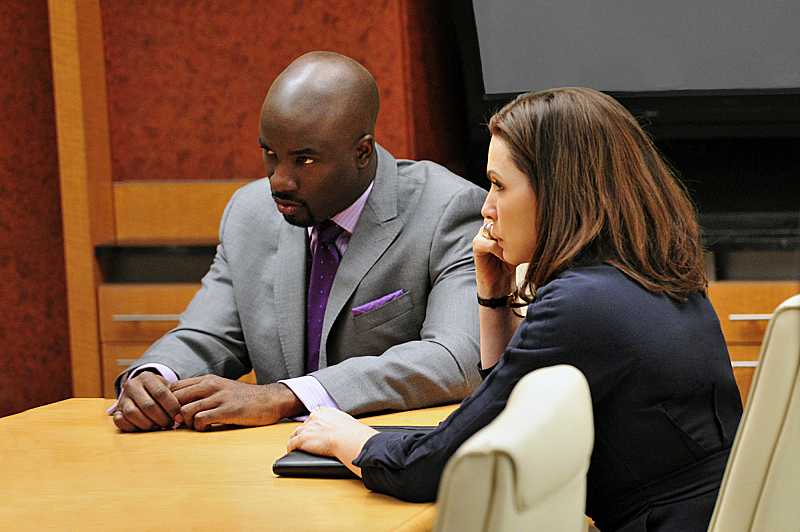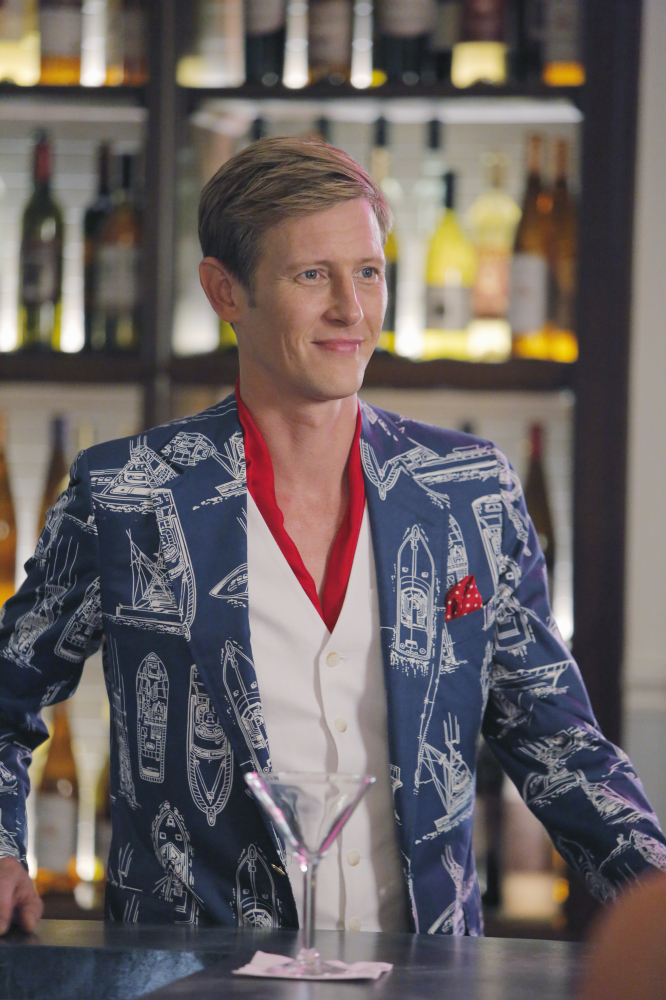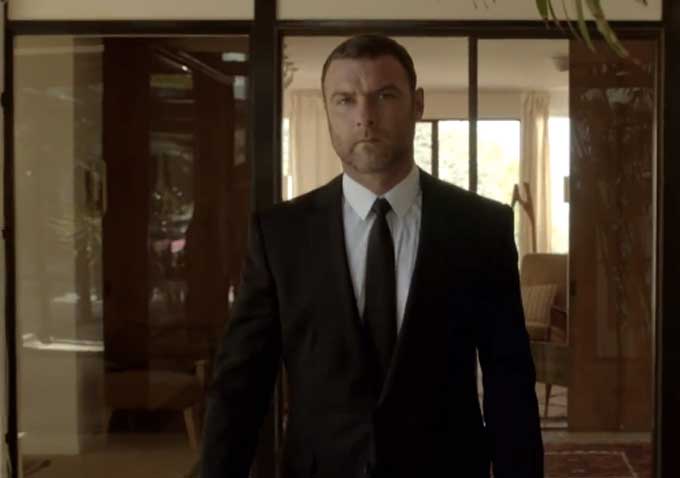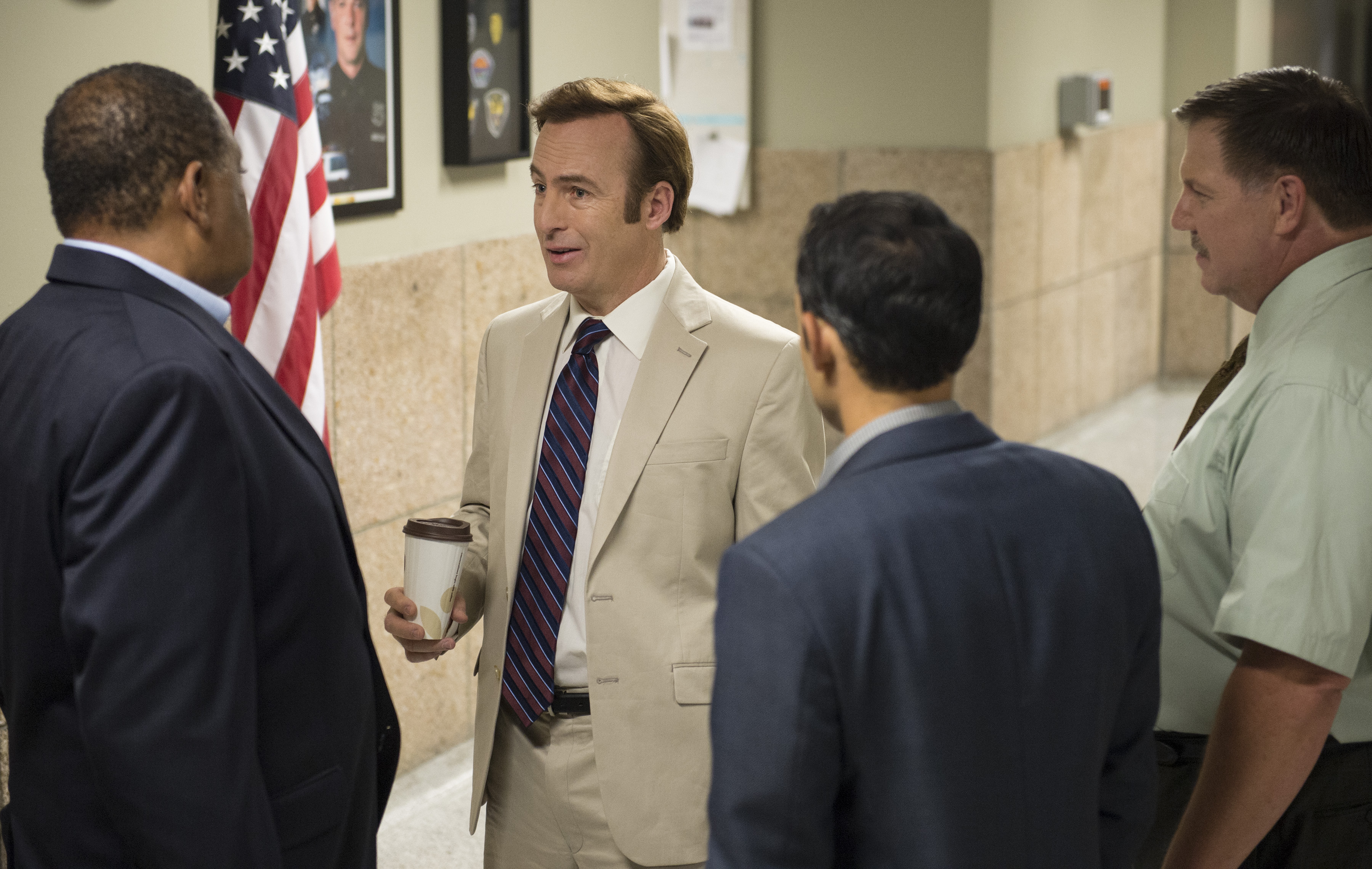By providing your information, you agree to our Terms of Use and our Privacy Policy. We use vendors that may also process your information to help provide our services. This site is protected by reCAPTCHA Enterprise and the Google Privacy Policy and Terms of Service apply.
TV’s Most Dapper Gentlemen: Costume Designers Reveal the Secrets of Suits

READ MORE: ‘Penny Dreadful’ Costume Designer Gabriella Pescucci on Her Dreadfully Delicious Designs
There’s certainly no shortage of handsome men on television these days, but there is just something about a suit and tie that will really melt a heart. Of late, more and more men are appearing on the small screen as polished and sophisticated professionals, and their wardrobes tell a story about who they are, where they come from and what we need to know about them.
However, as much as audiences admire these characters, It takes much more than a pair of broad shoulders to work a suit. To do it really, really well requires a creative eye, a keen sense of style, and the immaculate art of synthesis that can only be found in the costumes on TV’s most popular shows.
From Lemond Bishop to President Grant to Don Draper, every suit tells a story. Below, the costume designers of some of television’s biggest, and certainly most fashionable, shows talk about how they craft these fellas into the dapper gentlemen viewers swoon over every week. Each designer’s vision is as different as the characters they dress, and they’ve revealed the secrets on how they consistently produce looks that make these gentleman look so desperately handsome.
“Mad Men”: Don Draper (Jon Hamm)
Since “Mad Men” premiered eight years ago, Don Draper has become synonymous with style and masculine grace. Janie Bryant, costume designer for the show, immerses herself in research for every outfit, and before she ever shrugs Don into a jacket, she watches old movies and peruses books, magazines and catalogues. It’s hard to believe, but some of Don’s most dashing pieces have been inspired by vintage pieces Bryant’s discovered on Ebay.
Bryant communicates Don’s point of view by relying on her own impression of the character. She “envisioned him a character of secrecy, mystery, and seduction” (which is a pretty succinct characterization, if you know Don) and translated that vision “into a minimal, masculine palette of grays, blacks, deep burgundy and navy,” which underscores her ethos of “evoking emotion and telling the story of the characters.”

According to Bryant, both Don and Roger needed a tailored, well-cut suit (“bespoke” for the non-layman) so that it visually communicated “their upper crust social status and knowledge of good tailoring.” Bryant, and Don by proxy, has excellent taste, and often worked with Brooks Brothers to “create suits to my design specifications.” The Brooks Brothers’ brand, she said, “has been instrumental over the years in helping create the ‘Mad Men’ suits.”
Bryant worked with the abstract as well, suggesting that Don’s suit symbolizes “his armour, protecting himself from the world and others.” The suit projected Don’s narrative visually, helping the audience to connect what they see to what they hear and feel about the characters. (Sometimes, we need all the help we can get when it comes to understanding Don Draper.)
Bryant is collaborating with Mack Weldon to produce a sock line that will definitely be inspired by her work with the characters on Mad Men. She says, “Socks are an amazing way to show personal style! I am excited to eventually design a line of dress socks that would complete any Don Draper look.”
“Scandal”: President Fitzgerald “Fitz” Grant (Tony Goldwyn)

So much has been made of Olivia Pope and her infamous white dresses that it could be easy to only talk about her wardrobe, but what a disservice that would be to Fitz. Lyn Paola claimed that she was “fairly confined in my choices for Fitz,” but you would never know it, for as well appointed as the President always appears.
Certainly, as the President of the United States, Fitz is limited to what chances he can take, but Paola likes to experiment with the accessories. “The suit is always the basis of the look, and the shirt and tie are where I get to play and finesse the character,” she said. “Often we can add elements to the look — embroidery on the shirt, cuff or no cuff, tie or no tie, different kinds of ties… The look is defined by the suit, everything else is window dressing.”
She also confessed to enjoying when Fitz has his more casual moments, outside the Oval Office — sometimes with Olivia, sometimes with Mellie. In these moments, she said, “we can use his costumes to reveal who he is. A simple thing might be a t-shirt from the Navy, which reminds the audience that Fitz served his country in other ways.”

Fitz is in excellent company this season, as he also dons custom suiting from Brooks Brothers. Not only does he wear the same line as Don Draper, but Paolo found it an “interesting collaboration, because after all, so many of America’s Presidents have actually worn Brooks Brothers.”
As far as visual impressions, Paolo drew inspiration from the characters, saying, “Each design choice is based upon a particular character, scene, moment, for me.” But it’s not entirely up to the fiction. She took cues from the actors themselves, hoping to guide them to the characters through the clothes. “There is no greater moment than when an actor turns to you in a fitting and says, ‘This is it! Now I know who this person is.”
Paolo was proud to help bring Rhimes’ imagined world to life because, as she put it, “That is what costume designers do — we bring people and worlds to life through clothing… We tell a story.”
“The Good Wife”: Lemond Bishop (Mike Colter)

Good guys shouldn’t have all the fun, and Dan Lawson, costume designer for “The Good Wife,” keeps a keen eye on exactly on how to tell a villain’s story with clothes.
Of course, the bad guy happens to be Lemond Bishop, whose mere physical countenance deserves special attention — tall, dark, and with a hint of menace, he is not a character who will be ignored. Lawson characterized Lemond as “vain and thinks a lot of himself. I think he is meticulous. But he wasn’t born with a ‘silver spoon in his mouth.'” (He forgot to mention dangerous and ridiculously suave.)

Lawson conceded that Lemond has a bolder taste when it comes to color, “and certainly marches to his own drummer. He can carry it off well, and he attracts attention, which is probably what he craves.” (A tricky situation for a notorious drug dealer with a State’s Attorney in his pocket.)
Lawson said Lemond’s style is all about the details. The hallmarks of Lemond’s wardrobe are “double-breasted suits, peaked lapels, gorgeous silk ties, pocket squares, suspenders, French cuffs and boldly striped shirts.” He’s fancy, and wouldn’t have it any other way.
In terms of telling Lemond’s story, Lawson wanted audiences to “know who the character is, and to believe that the character is real within the world of the story and show.” He is always answering his own question, “Did the audience believe him?” But it’s a safe assumption that audiences are buying into Lemond in a big way.
READ MORE: Watch: ‘Inherent Vice’ Costume Designer Mark Bridges Takes You Into The Closet
“Revenge”: Nolan Ross (Gabriel Mann)

From one sort of criminal to another, Nolan Ross made this list because even in his darkest hours, he manages to sport a jaunty ascot, a bright sock, or bold jacket. A little flamboyant, a lot Hamptons, and a huge helping of bespoke suits makes Jill Ohanneson’s favorite male character to dress — the “fearless billionaire.”
Nolan has gone through quite a transformation since “Revenge’s” first season, but that was part of the fun for Ohanneson. He’s managed to stay stylish through it all, as his style has “gone from awkward nerd, to eclectic collar-popper, to jailbird, and on to polished billionaire.” This exemplifies her philosophy of dressing each character according to their current situation at any given moment in the show.

Ohanneson, when working, considers “where they come from, what’s happening to them right now and what’s going to happen to them in the future. Also, what is their geographical, financial, career, political religious and relationship status?” Fans of the show know what an incredible balancing act Ohannenson has on her hands, given the show’s infamy for intricate plot twists and complex character development.
Because Nolan’s style skews a little eclectic, she can’t rely on any particular line to offer everything she needs for his look. Ohanneson “often ends up building suits and shirts from scratch or modifying existing pieces for Nolan to get exactly what I want for him in a certain scene.” Which probably explains how the character can appear both overstated and chic.
Ohanneson hopes the audience leaves each episode with the impression “that they really know who the character is, what he’s feeling, and where they are going, based on how the different pieces of their costumes are put together and accessorized.”
“Ray Donovan”: Ray Donovan (Liev Schrieber)

There is something undeniably attractive about a man that just looks like he means business, and Ray Donovan is just that sort of gentlemen. “Ray Donovan’s” costume designer Christopher Lawrence describes the lead character’s approach to style as, “very straight forward. He has money and know what is ‘right’ and how clothes should be tailored to fit the man.”
A transplant from South Boston to Los Angeles, the character of Ray doesn’t feel compelled to alter his personal style. Lawrence has to communicate the character’s apparent masculinity in a tangible way, describing him as a “Southie at heart, a man’s man. [He] would never want to be mistaken for a dandy. He would always present himself as well as possible without making any kind of statement. He’d rather you didn’t remember him or what he was wearing.”
Since Ray is a Hollywood fixer, his wardrobe has to be well constructed enough to be taken seriously, but not loud enough to draw attention. This manifests itself in lots of black-on-black, “beautiful pieces that will open doors, and classic masculine silhouettes.” Lawrence likened him to a “shark navigating the waters of Los Angeles, sleek and stealth.”
Even though Ray’s style isn’t as carefully inspired as some of the other gentlemen, Lawrence still pours a lot of thought in how to communicate his point of view. He relies on designers that are reliably classic and elegant, such as Ermenegildo Zegna, Calvin Klein, Giorgio Armani and Ralph Lauren. These designers deliver suits that feature a cut that can, in Lawrence’s words, “subliminally inform the audience how the character feels about himself, his vanity, or lack thereof, and will help show his economic level.”
These factors vary depending on the audience’s viewing experience, and Lawrence must factor that in. “Now that the audience is able to watch our work on everything from a phone to a huge wide screen, you have to design your characters very thoughtfully and with many layers,” he said. “For the viewer watching on the smallest of screens, the silhouette has to inform, also the use of color and pattern is very important. However, the same costume may be viewed in a larger format and you don’t want to overwhelm with pieces that will go over the top when magnified.”
No matter what, Lawrence said, “You can only stay true to the story you are telling and the characters you are designing.” Which matters a great deal when you are drawing a character so full of secrets and intrigue.
“Suits”: Harvey Specter (Gabriel Macht)
A list of handsome men in suits wouldn’t be complete without including a show of the same name. Every male character on this show rocks a suit, but it’s the leading man, Harvey Specter, who steals every scene he’s in. His style communicates the character’s power and control, and one glance at Harvey in a three piece suit, will make you a believer.
Joli Andretta is the costume designer for the USA series, and described Harvey’s style as “classic [with an] inherited knowledge quality.” She hoped to conjure up, “an old school Cary Grant style, communicating his impeccable taste and knowledge of tailoring is a job equal to a gift.”
This gift is measured in the details of each costume for each scene. Harvey’s trademark look includes a peak-lapel suit, and Andretta deferred to Tom Ford in many instances to communicate this point of view, although she supplements with custom-made suits when Harvey’s choices call for it.
Every suit is immaculately cut; Andretta wanted this to “tell the story of the man wearing it. Or at least his mood. Playful, sexy, or all business.” She wants to leave the audience with “a sense of romance,” and it’s pretty obvious she’s done her job, because who hasn’t fantasizing about romancing Harvey?
“Black-ish”: Andre Johnson (Anthony Anderson)

Andre’s style may not be as traditional as the other guys of this list, but he’s as dapper as they come. The fashion choices Dre makes, according to Beverly Stacy, designer for “Black-ish,” “are dictated by his background and experience.” He has a laid-back, West Coast aesthetic that marries an upscale tone with modern lines, defining what Stacy calls, “Hip Hop Couture.”
Dre’s everyday choices land on the more casual side, but Stacy conveys his point of view with fit, color, and patterns, keeping his look relaxed but still polished. She pulls from the G-Star line, working in pieces from that collection in every episode, because of the great knits, shirts and denims that fit Anderson so well.
Dre also has sneaker game; the character has been known to wear kicks from Buscemi, Jimmy Choo, Nike, or OG Adidas, cultivating quite a collection — a nod to the lifestyle he’s grown up in. “He’s a college graduate from the neighborhood, yet his look is refined and timeless,” Stacy said.
When Andre does don a suit, he cuts quite a figure, but he stays pretty faithful to Stacy’s “Hip Hop Couture” methods. Sometimes, Dre doesn’t even wear a tie, and his suits, “are typically two button and contemporary. They’re sleek and tailored, but not too fitted. He will only wear a tie on very special occasions. And, he also wears his sneakers with his suits.”
Ultimately, Stacy wants us to look at Dre and think “he’s smart, funny, refined, sophisticated and yet still exciting, stylish and very, very cool.” Job well done.
“Better Call Saul”: Jimmy McGill (Bob Odenkirk)
Even though “Better Call Saul” is set 13 years in the past, the title character endears the audience with his earnest choices and practical approach to his attire. And as a prequel to “Breaking Bad,” we have the interesting perspective of knowing how his story ends, and seeing the evolution into that character.
Costume designer Jennifer Bryan said that evolution starts with his brown suit — he is the only character on the show to wear brown, and his suits are always double-breasted. This combination, Bryan said, projects two very important things about Jimmy: “That he’s less than affluent, but also that he wants to be noticed.”
Bryan used tricks to communicate his persona, which is embodied in the brown suit; she “sews the buttons too high, making them off kilter, but not clownish,” as a way to communicate that he’s not as well off as he wants.
In fact, this brown suit acts as exposition for Jimmy’s character – a prequel for his transformation into Saul down the road. She said it was harder to dress a character that you’ve already met and known in a particular way, because you have to honor both “the scriptwriter’s vision and the audiences’ expectations.”
All of Jimmy’s suits are custom made by Bryan, and although his character doesn’t have a lot of suit options, “what he does have, he’s gonna work. He’s using the suit as a facade.” Bryan switches out shirts and ties as a way for Jimmy to express his personality with the limited resources he has.

The exception to this, of course, is when Jimmy wears his Matlock-inspired suit. Bryan believed Jimmy to be an, “expert at mimicking,” so she made the suit as closely to the original as possible.
Jimmy has a literal sense to his clothing choices, thinking, as Bryan asserted, that “the kind of business he’s doing will dictate the way he dresses,” and no matter what, he wants to emote the idea that, “this is how I want to look, not how I have to.”
To quote a cliche, the suit really does make the man — but in the cases of these handsome gentlemen, it’s a lot more than a pair of slacks and a jacket. It’s not just the writing or the acting, but the thoughtful attention to the particulars of composition that make a character iconic, and this precision is truly an art unto itself. To appreciate the the whole, one must acknowledge the details; these costume designers are masters of the fine point.
READ MORE: Here Are the 10 Films That Inspired ‘Mad Men,’ As Picked By Matthew Weiner
By providing your information, you agree to our Terms of Use and our Privacy Policy. We use vendors that may also process your information to help provide our services. This site is protected by reCAPTCHA Enterprise and the Google Privacy Policy and Terms of Service apply.



















